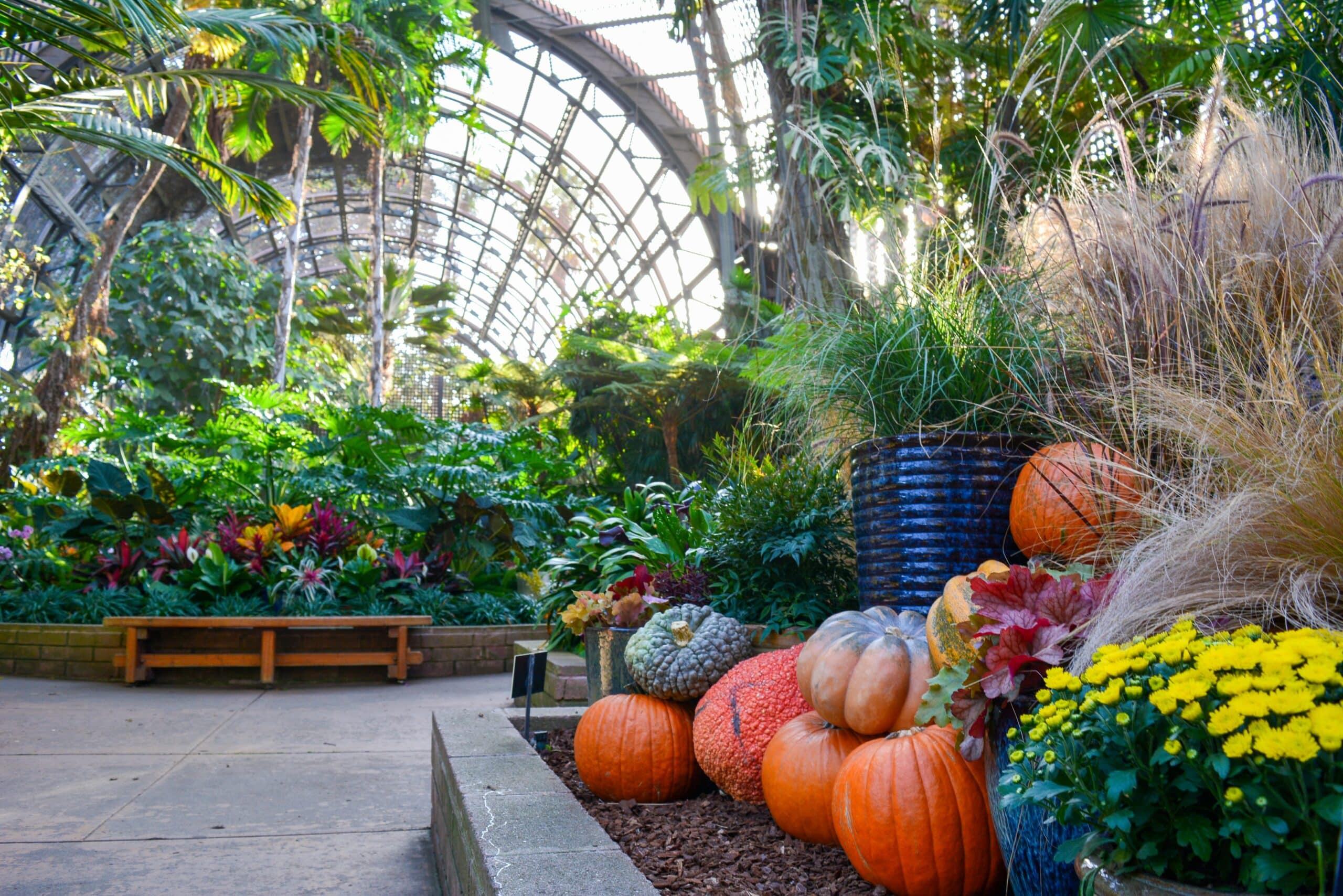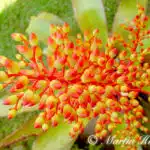Bromeliads are a beguiling breed of plants, captivating those with an appreciation for the wonders of nature. Their simple yet complex beauty has drawn green thumbs and weekend gardeners alike since time immemorial. If you’re looking to add some bromeliad flair to your home or garden, then look no further than this comprehensive guide on plant care and growing techniques.
No matter if you’re an experienced gardener or just starting out, understanding the fundamentals of bromeliad care is essential for ensuring these fascinating plants thrive in their new environment. From adequate light requirements to proper fertilization techniques, there’s a lot to consider when it comes to keeping your bromeliads healthy and happy.
By following this guide on bromeliad plant care and growing techniques, you’ll be able to create a stunning indoor oasis filled with these gorgeous plants that will last for years to come. So let’s get started!
What Is A Bromeliad?
A bromeliad is a type of flowering plant that belongs to the Bromeliaceae family. They are characterized by their thick leaves, usually arranged in a spiral pattern, and their colorful and long-lasting blooms. The most popular varieties can be found in tropical climates, but some species can also be grown indoors.
Caring for a bromeliad is relatively easy since they don’t require much attention from the grower. They do best in bright, indirect sunlight, so it’s important to make sure they’re placed in an area with plenty of light but not too much direct sun. Additionally, it’s recommended to keep them moist by spraying or misting the leaves once or twice a week. Fertilizing every two weeks during the growing season is also beneficial for healthy growth.
Bromeliads are perfect for beginner gardeners who want to add some vibrant color and texture to their indoor space without having to tend to the plants frequently. With proper care and adequate light, these plants will bloom for months at a time—adding an exotic flare to any living space!
Where Can Bromeliads Be Grown?
When it comes to growing bromeliads, one of the most important questions to consider is where to put them. These tropical plants can be grown indoors or outdoors, depending on the climate and your preferences.
Indoors, bromeliads are easy to care for since they don’t require much sunlight or frequent watering. They should be placed in well-ventilated areas that receive indirect sunlight. You’ll also want to make sure their soil is kept moist but not overly saturated.
Outdoors, bromeliads can thrive in many climates as long as they get enough light and water. In temperate regions, it’s best to place them in a shady spot so they don’t get too much sun during hot summer days. If you live in a tropical area, these plants can be placed in sunny spots as long as there is some protection from rain and strong winds.
No matter where you decide to grow your bromeliads, the next step is preparing the soil properly for optimal growth.
Preparing The Soil
Soil preparation is an important part of growing bromeliads indoors. That’s because the soil needs to be able to support the plant and provide it with the nutrients it needs for healthy growth. To do this, you’ll need to adjust the pH level, as well as add organic matter, such as compost or peat moss.
When preparing your soil, you should mix in some sand or other coarse material to improve drainage. You also want to make sure that the soil has plenty of air pockets so that roots can develop properly. Additionally, adding a slow-release fertilizer will help provide your bromeliad with additional nutrients over time.
Finally, water your soil until it is moist but not soggy. This will ensure that your bromeliad’s roots have access to moisture without becoming too wet which could lead to root rot. With this step completed, you’re now ready for planting bromeliads in your home.
Planting Bromeliads
Planting bromeliads can be a rewarding experience, and with the right preparation, it’s straightforward. To begin, you’ll need to find a pot with good drainage that is slightly larger than the root ball of your plant. Line the bottom of the pot with gravel or pebbles for additional drainage, then fill it up halfway with prepared soil. Place your bromeliad in the center of the pot and fill in around it with more soil. Finally, lightly press down the soil so that it’s firmly surrounding the roots without being too compacted.
Once you’ve planted your bromeliad, water it thoroughly until there is standing water at the base of the pot. This will help ensure that there is adequate moisture for its roots to absorb from below. Afterward, you should let the top layer of soil dry out before watering again so as to avoid over-watering and damaging your plant.
With its new home established, your bromeliad is ready to take on its next challenge: sunlight requirements! Proper lighting will be essential for healthy growth and development; otherwise, your plant won’t thrive as well as it could.
Sunlight Requirements For Bromeliads
Sunlight requirements for bromeliads are an important factor to consider when growing them indoors. The amount of light they need varies depending on the species, but in general, they should be placed in a spot that gets bright, indirect sunlight. This could be a south-facing window or an area that is shaded from the direct sun. If you can’t provide the right lighting conditions, you may need to supplement your plants with artificial lights.
When deciding where to place your bromeliads, it’s important to keep in mind that too much light can be just as damaging as not enough light. If your bromeliads are getting too much direct sunlight, their leaves may start to fade and burn. To protect them from this, you can use sheer curtains or blinds to filter some of the light or move them away from the window if necessary.
To make sure your bromeliad plants are getting the right amount of sunlight, observe how they respond over time and adjust their placement accordingly. With careful attention and the right conditions, you’ll have happy and healthy bromeliads! Moving forward with our plant care guide, let’s look at watering needs for these beautiful plants.
Watering Bromeliads
It’s no secret that properly caring for bromeliads is key to their success. Watering them correctly can be the difference between a thriving plant and one that’s barely hanging on. To ensure your bromeliad doesn’t come up short, here’s a look at the basics of watering these tropical beauties.
Watering bromeliads takes some finesse, but it’s not rocket science. Generally speaking, when it comes to watering bromeliads, less is more – too much water can lead to root rot and other problems. As a rule of thumb, it’s best to wait until the top few inches of soil have dried out before giving your bromeliad a good soaking. Once you do give them a drink, make sure to empty any standing water from their cup-like rosette within 24 hours – otherwise it can create an ideal environment for mold or fungus growth.
When in doubt about how much water your particular plant needs, take a look at its leaves – if they appear dry and wrinkled, that’s usually a sign that your bromeliad could use some hydration. While overwatering can spell disaster for this type of plant, underwatering may cause its leaves to turn yellow or brown and curl up at the edges – so keep an eye out for signs like this as well.
All things considered, finding the perfect balance of moisture for your bromeliad isn’t as hard as it might seem – with just a little bit of care and attention you’ll be able to ensure that your tropical beauty stays happy and healthy! Now let’s look at fertilizing these plants and how you can help them flourish even more.
Fertilizing Bromeliads
Fertilizing bromeliads is like giving a nutrient-rich oasis to thirsty plants. With the right balance of food, these colorful and vibrant blooms can flourish in any indoor environment. Proper fertilization is key for healthy growth and vibrant flowers.
First, it’s important to understand how often to feed bromeliads. Generally, these tropical plants should be fed once a month during their active growing season — typically from spring to fall. All-purpose, water-soluble fertilizer diluted at half strength is best for these plants. Avoid using any type of slow-release fertilizer as this could cause root burn or damage to the leaves of your plant.
When applying fertilizer, make sure it’s evenly distributed throughout the cup and around the base of the plant. Once you’re done feeding your bromeliad, don’t forget to water your plant thoroughly; this will help activate the nutrients and give your plant an even boost. With proper fertilization and care, your bromeliad will soon be blooming with health and beauty! Transitioning into pruning now further helps keep your plant healthy and looking its best.
Pruning Bromeliads
Pruning bromeliads is an important part of their care and maintenance. It helps keep the plant healthy, promote growth, and ensure that it looks its best. Pruning also helps remove dead or damaged foliage as well as control the size and shape of the bromeliad.
To prune a bromeliad, start by cutting away any dead or damaged leaves from the bottom of the plant. This will help to promote healthier new growth. Next, use scissors or pruning shears to trim away any overly long leaves or stems that are sticking out too far. Be sure not to cut too deeply into the center of the plant, as this may damage the roots. Finally, it’s important to monitor your bromeliad for any signs of new growth so you can continue to shape it accordingly.
By following these steps and properly pruning your bromeliad regularly, you’ll be able to maintain a healthy and attractive plant in your home. And with that taken care of, it’s time to move on and learn about controlling pests and diseases in your bromeliad.
Controlling Pests And Diseases
Bromeliads are beautiful, exotic plants that can be a great addition to any home. But with their delicate and vibrant foliage comes the added responsibility of protecting them from pests and diseases. How can you do this? Read on to find out!
There’s no denying that pests and diseases can cause serious damage to your bromeliads. The best way to protect them is by preventing infestations before they happen. To do this, it’s important to keep your plants in a clean environment and inspect them often for signs of pests or disease. If you spot any issues, take steps such as removing affected leaves or using an insecticidal spray.
It’s also important to keep your bromeliad well-watered and fed with good quality fertilizer so that it has all the nutrients it needs to stay healthy. With these tips in mind, you’ll be able to keep your bromeliad looking its best for many years to come! Now let’s look at the next step: repotting your bromeliad…
Repotting Bromeliads
Repotting bromeliads can be a daunting task. After all, these plants are not like other houseplants that you can easily move around and repot in different containers. But don’t worry—with the right tools and some patience, you can repot your bromeliad with ease.
Imagine the feeling of excitement as you carefully remove them from their pot and examine their root systems. You may even find that they have grown too big for their current container! With a few simple steps, you can give them a new home and keep them healthy and thriving for years to come.
From preparing the soil mix to selecting the right pot size, there is much to consider when it comes to repotting bromeliads. But once everything is in place, all you have to do is transfer your plant into its new home and provide it with ample water and light. With proper care, your bromeliad will be ready for its next growth spurt! Now let’s take a look at propagating bromeliads…
Propagating Bromeliads
Bromeliads are amazing plants! Did you know that there are over 3000 species of bromeliads? That’s a lot to choose from when propagating these beautiful and easy-to-care-for plants.
Propagation is the process of creating new plants from existing ones. It can be done through division, offsets, or seeds. Division involves splitting a mature bromeliad into two or more pieces, which then develop roots on their own. Offsets are small shoots that appear at the base of an adult bromeliad; they may be removed and grown separately in soil or water. Lastly, bromeliads can be propagated using seed, though this method requires patience since the seeds can take several weeks to germinate and even longer to produce a mature plant.
No matter which propagation method you decide on, all require proper care and attention. Soil needs to be well-draining, nutrient-rich, and lightly acidic with a pH between 5.5 and 6.5 for best results; water should also be room temperature and free of chlorine or other chemicals for optimal growth. With the right conditions and maintenance, you’ll soon have your own collection of colorful bromeliads growing strong!
Common Species Of Bromeliads
Bromeliads are a unique and beautiful type of plant that come in many different varieties. Knowing which species of bromeliads are available can help you make the right choice when selecting one for your home.
When it comes to common bromeliads, there are a few basic types to choose from. The most popular is the Aechmea, which have large, showy rosettes with bright colors and long-lasting flowers. They’re easy to care for and perfect for beginners. Another popular species is the Tillandsia, which lack traditional roots but are hardy and drought-tolerant. Lastly, Guzmania stands out for its colorful foliage and long-lasting blooms, making them an eye-catching choice for any home.
No matter which species you select, all bromeliads require well-drained soil, lots of humidity and indirect light to thrive indoors. With the right care and environment these plants can live up to several years in your home, so take some time to decide which type will work best for your needs. With that in mind, let’s move on to choosing containers for your bromeliads.
Choosing Containers For Your Bromeliads
Deciding how to best display your bromeliads starts with choosing the right containers. Finding the ideal container will help ensure they thrive and add a touch of beauty to your home. Just as important as considering their growing needs, is taking into consideration the aesthetic aspect of these plants.
When selecting a pot for your bromeliad, think about the size, shape and material it’s made of. The container should be big enough to accommodate for future growth but not too large that it overwhelms the plant or takes away from its beauty. Make sure there is plenty of drainage so that excess water can escape and prevent root rot. Clay, terra cotta and ceramic pots are great options as they are porous and allow air flow which helps keep roots healthy.
Finally, it’s all about making sure you select an attractive yet functional container for your bromeliad that complements its natural beauty. After finding the perfect pot, you’ll have a beautiful addition to any room in your home – one that will last for many years to come! With this in mind, let’s explore how you can use bromeliads to decorate your living space…
Decorating With Bromeliads
Decorating with bromeliads can be a great way to bring some life into your home. They’re easy to care for, and make for great conversation pieces. Not only are they beautiful plants, but they also come in a variety of colors and shapes that will add to the aesthetic of any room.
When choosing where to place your bromeliad, always keep in mind the amount of light it will receive. Some bromeliads need more light than others, so you’ll want to make sure you’re placing them in an area where they won’t get too much or too little sun. You should also consider how your bromeliad will look in relation to other decorations or furniture in the room. If you have other plants nearby, you may want to think about how their colors will complement each other.
Bromeliads are a great way to give any room a unique touch and bring life into any living space. With a bit of consideration as far as placement and lighting goes, your bromeliad can be the perfect addition to your home’s decor. Now that we’ve gone over how to decorate with bromeliads, let’s take a look at troubleshooting common issues with bromeliad care.
Troubleshooting Bromeliad Care
Troubleshooting bromeliad care can be a challenge for even the most experienced gardener. It is important to recognize the signs of stress and understand how to address them quickly. When caring for bromeliads, it’s essential to know how to diagnose and treat issues like pests, nutrient deficiencies, and diseases.
One of the most common problems with bromeliad care is pests such as mealybugs, scale insects, and aphids. These can be difficult to get rid of because they hide in the leaves or in between scales on the plant. To combat these pests, use a combination of insecticidal soap or neem oil as well as other methods like introducing beneficial insects or removing infected parts of the plant.
Another issue that may arise is nutrient deficiencies. Bromeliads need specific amounts of nitrogen, phosphorus, and potassium in their soil for optimal growth. If there are signs of yellowing leaves or stunted growth, this could indicate a nutrient deficiency. Adding fertilizer to your soil can help solve this problem but it’s important to use one specifically designed for bromeliads. Additionally, keeping an eye on pH levels and checking for any other signs of poor health can help you catch potential issues early on.
By understanding what could go wrong with your plants and taking action when needed, you can ensure that your bromeliad stays healthy and happy!
Frequently Asked Questions
How Long Do Bromeliads Typically Live?
Bromeliads are an ancient symbol of fire, spirit, and growth. As these beautiful plants bloom and add a splash of color to any home, it’s natural to wonder how long they will last. While the answer can vary based on the type, bromeliads typically live for a few months to several years.
The length of time that a bromeliad lives depends largely on the type of plant. Most types of bromeliads are epiphytes, meaning they grow on other plants or trees instead of in soil. These types usually live around six months to two years before blooming and eventually dying off. On the other hand, terrestrial bromeliads—those that grow in soil—have longer lifespans, with some living up to 20 years or more!
No matter what type you have, providing your bromeliad with proper care is essential to ensure that it lives as long as possible. This includes making sure that the plant has enough sunlight and water (but not too much), along with using fertilizers and pesticides when needed for optimal health. With just a little bit of effort each day, you can help your bromeliad thrive for many years to come!
What Temperatures Are Best For Bromeliads?
Bromeliads are an exotic and beautiful addition to any home. It’s like having a little bit of the tropics in your living room! But if you want them to thrive, there are some things you need to keep in mind — chiefly, what temperatures they prefer.
When it comes to temperatures, bromeliads are quite particular. They don’t like it too hot or too cold. Optimal temperatures for bromeliads range from around 65°F to 80°F (18°C to 27°C). If your home tends to get cooler than that during the winter months, you may need to invest in a space heater or move your plants closer to a heat source.
On the other hand, if your home gets scorching hot in summer, you’ll need to make sure that your bromeliads have plenty of ventilation and shade and are kept out of direct sunlight as much as possible. Keeping an eye on their preferred temperature range can help ensure their long-term health and longevity — allowing them to bloom and grow for many years!
Are Bromeliads Toxic To Pets?
Perilous pets and pretty plants – it’s important to know whether bromeliads are toxic to animals. While these beguiling botanicals bring beauty and brilliance to your home, their potential danger can’t be ignored. Are bromeliads safe for furry friends?
The answer is both yes and no. Many varieties of bromeliads are non-toxic, but some contain compounds that can sicken or even kill your pet. It’s best to err on the side of caution when bringing a new plant into the house if you have pets, so research before buying any new species.
Since safety should always come first, familiarize yourself with the toxicity of any plants you plan to buy. Check reliable sources like the ASPCA website or contact a veterinarian if you need further advice on which varieties are safe for your pet. With the right information in hand, you’ll be able to enjoy a beautiful bromeliad without putting your pet in peril!
Are Bromeliads Seasonal Plants?
When it comes to plants, bromeliads are some of the most curious and captivating. The vibrant colors of their foliage and their unique shapes make them an excellent addition to any indoor garden. But with all of this beauty and charm, one may wonder if these plants have a seasonality to them?
The answer is yes! Bromeliads are tropical plants, so they do have distinct seasonal patterns that you should be aware of. While there is no exact timeline for when blooms will appear or when leaves will start to wilt, you can generally expect peak flowering in spring and summer, and little growth in winter months.
So if you’re looking for a plant that’s going to be providing you with beautiful blooms year round, bromeliads might not be the right choice – but their alluring nature definitely makes up for it! With proper care and attention, these charming plants can still provide you with plenty of joy throughout the entire year.
How Often Should Bromeliads Be Repotted?
Bromeliads are some of the most popular indoor plants, with their beautiful foliage and low maintenance requirements. But how often should these vibrant houseplants be repotted? To ensure optimal growth, there’s a few things to keep in mind when it comes to repotting bromeliads.
Allusion can be made to the Greek legend of Sisyphus, who was condemned to roll an immense boulder up a hill only for it to roll back down again. Similarly, it is important to not repot bromeliads too frequently; this can actually hinder their growth and cause them stress. For beginners, potting your bromeliad every three years is a safe standard — as long as you don’t notice any negative changes in its health or appearance.
When the time does come for repotting, be sure to use potting soil specifically designed for epiphytic plants like bromeliads. This type of soil allows water and air to pass through more easily than regular soils and will help maintain healthy root development. Additionally, make sure that the container you choose provides adequate drainage and has enough size for the plant’s roots system to grow unimpeded. By following these guidelines, you’ll have happy and healthy bromeliad plants for many years!
Conclusion
In conclusion, bromeliads are an excellent choice for indoor plants. With the proper care and attention, they can bring life to any home. They require temperatures between 55-85°F and should be repotted every two years. It is important to remember that while they are not toxic to pets, they should still be kept away from inquisitive animals.
Bromeliads make excellent houseplants due to their low-maintenance requirements and vibrant colors. With the right environment and care, these plants can live for many years in your home. There are many varieties of bromeliads available with stunning foliage to choose from.
With their long lifespan and vibrant colors, bromeliads are the perfect addition to any home or garden. So why not give them a try? Who knows — maybe you’ll find yourself caring for a whole collection of beautiful bromeliads!





























